

Viewpoints
Viewpoints is a blog in which different writers express their views and opinions on current topics. A new blog post is published about once every four weeks.
You can propose texts by e-mail to viestinta@kesko.fi. The maximum text length is 2,000 characters.
Christmas tends to be the biggest celebration of the year for Finns, filled with presents, decorations, music and food. “In our world of plenty, we can spread a smile of joy” says the song. However, not all families feast around the holidays.
Poverty affects some 110,000 children in Finland. Although the economy has improved, many families with children continue to struggle, and recent statistics show that poverty among families with children is on the rise.
Childhood poverty resonates later in life
The foundation for a good life is formed during childhood. A constant lack of means can affect a person’s life as a child and also later on. Children often make friends through hobbies - if the family cannot afford hobbies, the child may lack social connections.
Research also shows that teenagers of underprivileged families have less friends, and experience more bullying.
Being underprivileged is therefore not just about not having money, and this is why we should ensure sufficient and easily accessible services for families for support. We can all take part in creating safe and secure communities and neighbourhoods.
Christmas dinners for 28,000 families
There are many ways we can spread joy and bring welfare to others at Christmas. The Hyvä Joulumieli (‘Good Holiday Spirit’) Christmas fundraising campaign organised by the Finnish Red Cross, the Mannerheim League for Child Welfare and the Finnish Broadcasting Company YLE aims to bring joy to families with children and put food on their tables. Some 28,000 underprivileged families will receive 70 euro gift cards this year to buy food for Christmas, making the season more festive.
Wishing you all a good holiday spirit,
Maaret Alaranta
Coordinator, Social Welfare
Finnish Red Cross
K Group supports the Hyvä Joulumieli campaign again this year.
Juha-Heikki Tanskanen: New life for packaging materials
One man's rubbish is another man's raw material. Through sorting and recycling, discarded packaging materials transform from waste to new products. Finns are experienced recyclers, and sorting is a natural everyday habit for many of us. More than 60% of all packaging is recycled, and organic or biodegradable waste is no longer taken to landfill sites.
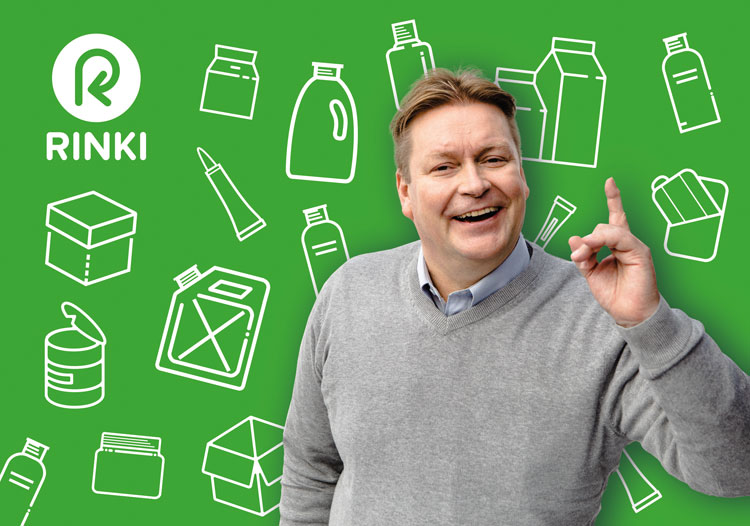
J. Jätevuori is a fictional character in Rinki’s campaign to encourage packaging recycling.
The nationwide network of Rinki eco take-back points enables convenient recycling of discarded household cardboard, glass, metal and plastic packaging materials. There are currently 1,850 Rinki eco take-back points in Finland, and plastic packing is collected at some 550 of them. Finns have a long tradition of glass, metal and cardboard recycling. The collection of plastic packaging began in 2016, and has fast become increasingly common.
Sorting must me made easy, which is why the Rinki eco take-back points are located in places where people naturally go anyway. We have been working closely with stores on this, and Rinki eco take-back points can currently be found at more than 400 K-store locations. This also enables the stores to provide more extensive services to their customers.
Sorting can be easy. All you have to think about is whether you have a packaging made of glass, plastic, metal or cardboard. If the answer is yes, take it to a Rinki eco take-back point. More information and instructions for sorting can be found at rinkiin.fi.
Every one of us has a choice when it comes to buying and recycling packaging. Let’s join forces!
Juha-Heikki Tanskanen
Managing Director
Finnish Packaging Recycling RINKI Ltd
Finns have been able to buy Fairtrade roses for 12 years now. The roses were first launched in K-food stores, and over the years, they have become the biggest Fairtrade product in Finland in terms of market share. Today, a whopping 40% of roses sold in Finnish grocery stores come from Fairtrade flower farms.
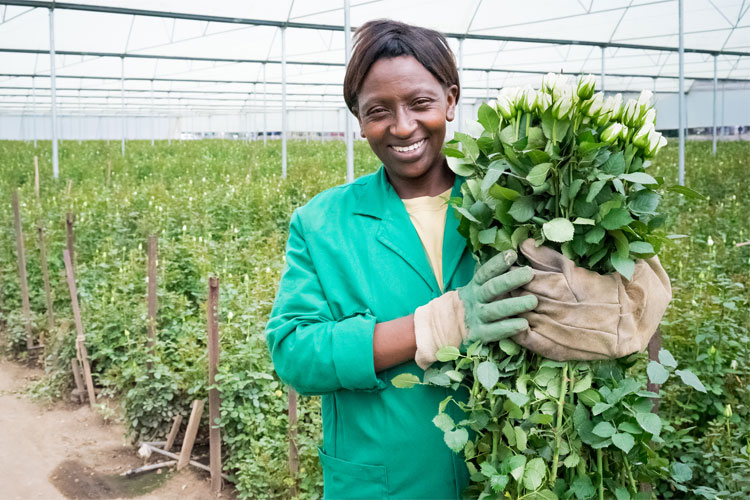 Monicah Wangui Kamau works in a Fairtrade flower farm in Kenya. The employees have decided to use the Fairtrade premiums paid to the farm on, for example, school fees for the employees’ children.
Monicah Wangui Kamau works in a Fairtrade flower farm in Kenya. The employees have decided to use the Fairtrade premiums paid to the farm on, for example, school fees for the employees’ children.
The first Fairtrade products appeared on the shelves of Finnish grocery stores in 1999, with Pirkka Fairtrade coffee among them. It’s no coincidence that K-stores have played such a central role in the Fairtrade success story, as they have long collaborated with Fairtrade Finland, which represents the Fairtrade organisation in Finland.
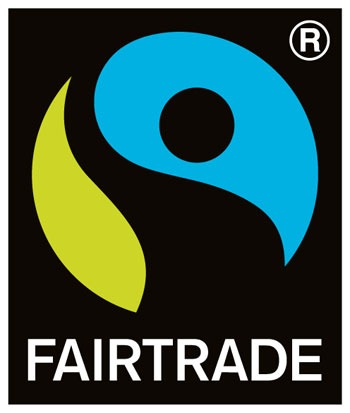
Fairtrade farms focus on improving conditions for both people and the environment
Fairtrade aims for appropriate farming conditions and sufficient compensation for the farmers and workers. Fairtrade determines a minimum price that the farmers must be paid for a product, in addition to which they are paid a Fairtrade Premium to be used for projects benefitting the whole community.
The Fairtrade products sold by K Group result in in over 60,000 euros worth of Fairtrade premiums a year. These funds have helped to support farmers’ education, healthcare and trading skills and develop farming methods. Fairtrade also sets requirements for the farms and farmers, and compliance is regularly monitored. The requirements include decent working conditions and respect for human rights as well as environmental sustainability.
The collaboration between K Group and Fairtrade as well as sustainable consumer choices are greatly needed also going forward. Consumers are clearly more and more interested in the origin of products - and K-food stores have acknowledged this.
Janne Sivonen
Executive Director, Fairtrade Finland
https://reilukauppa.fi/
Johanna Vepsä: Sustainable choices promote the wellbeing of our oceans
A lot of Finns may have missed the UN’s annual World Oceans Day on 8 June, but in many other countries, the day is celebrated with ocean-related festivals and charity events. For us at MSC, every day is world oceans day! We have a vision of the world’s oceans teeming with life, and seafood supplies safeguarded for this and future generations.
Why is marine preservation so important? Oceans are vital to life on Earth. They cover more than 70% of our planet’s surface, regulate the climate, and produce the oxygen that we need to live. They are home to an amazing variety of life, and fish and crustaceans are the primary source of protein for more than two billion people. Oceans are our last significant uncultivated food source, and therefore the wellbeing of sea life is essential for the survival of people’s livelihood and food security.
What is MSC’s role in all of this? The Marine Stewardship Council is an international non-profit organisation that recognises and rewards sustainable fishing and efforts to protect the oceans. MSC is also the only wild-capture seafood certification and ecolabelling programme recognised by the United Nations Food and Agriculture Organization (UNFAO), the Global Sustainable Seafood Initiative (GSSI), and the ISEAL Alliance. The World Wide Fund for Nature (WWF) also strives to promote the certification of fisheries and demand for MSC products as part of its wider efforts to educate consumers.
Our goal is that future generations can also enjoy seafood and oceans teeming with life. The blue MSC label can only be found on wild fish and crustaceans from fisheries that have been MSC-certified. We work together with the fishing industry, scientific community and trading sector operators to promote sustainable fishing and to ensure consumers have access to sustainably caught seafood. Sustainable fishing means ensuring healthy fish populations and minimising the environmental impact of fishing.
More than 300 fisheries in 35 countries have been given the MSC certificate, and over 27,000 seafood products globally now carry the blue MSC label, meaning there is plenty of choice when it comes to sustainable seafood. In Finland, there are more than 20 MSC traceability certificate holders and currently over 600 MSC-labelled products on offer – and promisingly, the number is constantly growing!
Johanna Vepsä
Marketing and Communication
MSC Finland
Päivi Makkonen: Sustainable alternative to packaging plastics can be found in well-managed Finnish forests
Consumers want to make sustainable choices. This can be seen every day in food stores, where customers increasingly pay attention not only to what they should eat but also to the food packaging. Concerns over the amount of plastic waste in our seas and elsewhere in nature have forced both consumers and companies to re-examine their packaging-related choices.
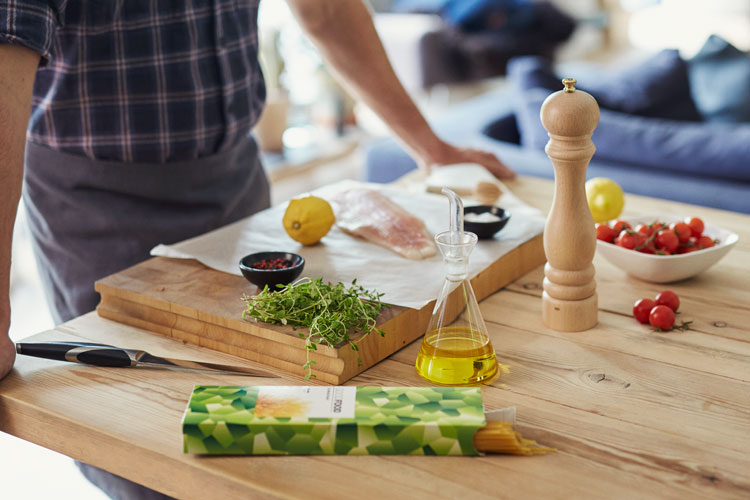
Finnish PEFC certified packaging board is always a sustainable choice: from forest to your home to recycling.
In choosing packaging materials, recyclable and biodegradable paperboard made from renewable raw material is a good choice in many ways. Certified high-quality Finnish paperboard is a recyclable material and the origin of its raw material is always known: the wood material comes from sustainably managed forests that bear comparison to international competition.
Most Finnish forests are PEFC (Programme for the Endorsement of Forest Certification) certified. A PEFC certification tells the consumer that the wood used in the product comes from a sustainably used forest that is managed taking nature values into consideration. It also indicates that the working conditions and safety of the people working in the production chain are in order. When consumers buy Finnish PEFC certified fibre-based paperboard packaging or toilet or kitchen paper, they can be sure they have made a genuinely sustainable choice.
Forest certifications and Finnish know-how also have global importance and impact. PEFC is the biggest forest certification system in the world, and 80% of Finnish forests are PEFC certified. The system is partly the reason our forests are growing better than ever and the amount of deadwood, which is important for biodiversity, has increased in our forests. Globally, only 10% of forests are covered by any certification system.
As the environmental impacts of packaging extend beyond manufacture and use, the recycling of fibre packaging is also important. Luckily, in Finland, it is also fairly easy. Through recycling, the fibre will live on in another product. Pure primary fibre is the best, safe option for e.g. food packaging, while recycled fibre has various other uses. Consumers can impact their environmental footprint not only by what they choose to buy at the store but also by recycling.
Päivi Makkonen
Vice President, Sustainability
Metsä Group
Cindy Chan: Towards a more transparent supply chain
Kesko and the Swedish ICA have worked together on the sourcing of home and speciality goods via ICA Global Sourcing (IGS) in Asia since 2016. The cooperation concentrates on the sourcing of home and speciality goods sold at K-food stores. The local IGS corporate responsibility team is, together with Kesko, in charge of assuring the social responsibility of factories.

ICA Global Sourcing (IGS) has offices in China, Hong Kong, Vietnam, Bangladesh and India, with over 100 employees.
Assuring the social responsibility of suppliers’ factories and securing product quality form a central part of the cooperation. In addition to third-party social audits such as amfori BSCI, IGS has developed its own social auditing tools, the ICA social audit. The pragmatic approach of the ICA social audit allows for easier communications between factory representatives and IGS auditors.
ICA social audit has four steps:
•Management interview
•Factory and dormitory tour
•Document review
•Confidential employee interview
Social responsibility issues are a challenge in high-risk countries. In India, for example, working at home and subcontracting are prevailing. Therefore, we strive for transparency rather than perfection in our supply chain. We can only demand continuous improvement from the factories if we know their actual situation.
In case any critical findings are identified during the auditing of a factory, the IGS CR team will communicate with Kesko’s purchasing team and CR team within 24 hours. If required, a red alert meeting will be called for, in which all parties will discuss the best possible solution to handling the specific case.
The combination of the ICA social audit and third-party audits has proved to be an excellent way to promote the transparency of the supply chain. The sourcing cooperation enables wider and high-quality selections of home and speciality goods, and, thus, creates added value to Kesko and the customers of K-stores. Thanks to the efficient process, Kesko now has a good command of their supply chain.
Cindy Chan
Social Compliance Manager of ICA Global Sourcing
Inkeri Ruuska, HelsinkiMissio: Social interaction in daily life reduces loneliness
An older gentleman comes in and blurts out right away: “I had to come in here to receive some of this toddler energy.” The location is HelsinkiMissio’s social living room, Albert's Living Room, in the Punavuori district in Helsinki, where families with children and seniors can meet and interact with each other. Volunteer seniors serve as hosts. Parents with small children and senior citizens can stop in and meet one another. The main emphasis is on pleasant time spent together. The interior of the space is comfortable and practically invites people to chat with each other and play together. The gentleman who just entered sits down on the couch and immediately a small boy with a book crawls onto his lap. They start reading the book, while the little boy’s mother enjoys coffee with the other mothers.
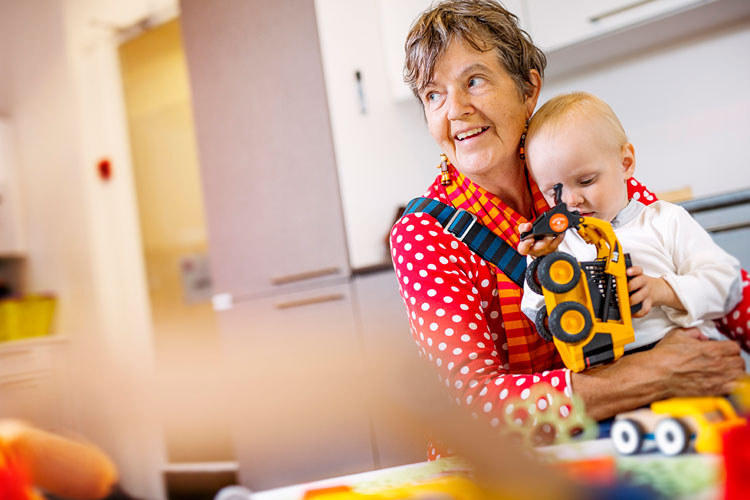
Photo: HelsinkiMissio / Jani Laukkanen
Many people, young or old, are lonely. Loneliness restricts one’s social circle, and research has shown it is also hazardous to health. Interaction with others in daily life reduces loneliness. We have a lot of spaces that are natural meeting points for people. Libraries have traditionally created a strong sense of social belonging. Art museums gather people together around a shared art experience. In addition to providing experiences, art is associated with powerful social interaction.
In daily life, stores are locations that can well promote social interaction and help reduce loneliness. A K-store retailer in Lahti got the idea to create a social living room adjacent to the store. The space is called Ainon tupa and it is open every Friday. Local volunteers operate this living room, too, and the retailer provides the coffee and sweet rolls. There, many of the residents in the area have found someone to chat with, which has brought joy to their daily lives. This phenomenon has started to spread. In Iivisniemi in Espoo, Kaken kahvila run by the local K-store retailer offers lonely elderly people the opportunity to enjoy coffee and meet other people on Fridays.
But let’s go back to Albert’s Living Room, which brings different generations together. The seniors explain how refreshing it is to be around little children and how it brightens their day to play with them or just watch them play. The young parents are grateful for the children having someone to play with and for the opportunity to take a short break when others are looking after the child. Also the gentleman who came in for some toddler energy goes home feeling joyful.
Inkeri Ruuska
Service Director
HelsinkiMissio ry
Pia Pere-Vanhanen: The Let’s Behave Ourselves message hit the mark
Have you seen the online video with the human-like animal characters, dressed in coats and carrying purses, demonstrating bad behaviour in stores? A gorilla ploughs into people with his shopping trolley, a rude chicken skips greetings and niceties.
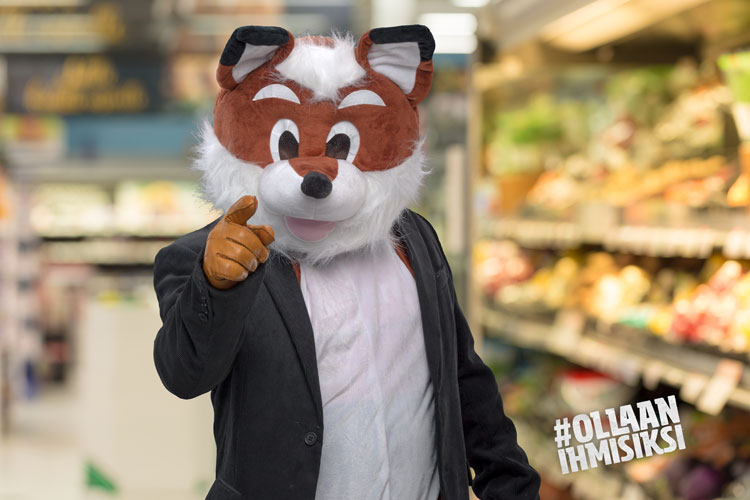
The Let's Behave Ourselves campaign video became familiar to many Finns in December and January when the Finnish Commerce Federation, Ministry of Economic Affairs and Employment, the Working Life 2020 project, Service Union United (PAM) and Finnish Grocery Trade Association worked together to campaign against bad behaviour.
Many of the people who saw the video online recognised the subject and saw its relevance to daily life. The link was evident in online discussions, social media likes, journalistic interest in the subject and feedback received by partners.
The link to daily life is confirmed by the study conducted by the Finnish Commerce Federation, with 63 per cent of the commercial respondents reporting that foul-mouthing and belittling of personnel had increased. Of consumers, 30 per cent had encountered disruptions caused by other customers in different customer service situations, and 52 per cent of them occurred in stores.
Many are trying to understand why these things are happening. Has the rude behaviour seen all too often on social media been transferred to face-to-face communication? Does the right to one’s opinion also mean the right to be offensive or rude?
The goal of the communications campaign is to make consumers consider their own roles in the occupational wellbeing of sales clerks and other people working in customer service, and to strengthen the positive cycle that comes from employee wellbeing, good customer service and, ultimately, the success of the company.
The campaign was launched in the busiest season for retail trade, Christmas, as it often causes additional stress due to the rush. The discussion will continue in the spring, as the subject is by no means closed. We still increasingly need people to put themselves in the other person’s shoes. Let’s create a positive cycle!
You can view the Let’s Behave Ourselves campaign videos at Facebook.com/ollaanihmisiksikaupassa/
#Ollaanihmisiksi #Vänligtbemött
Pia Pere-Vanhanen, Communications Director of the Finnish Commerce Federation